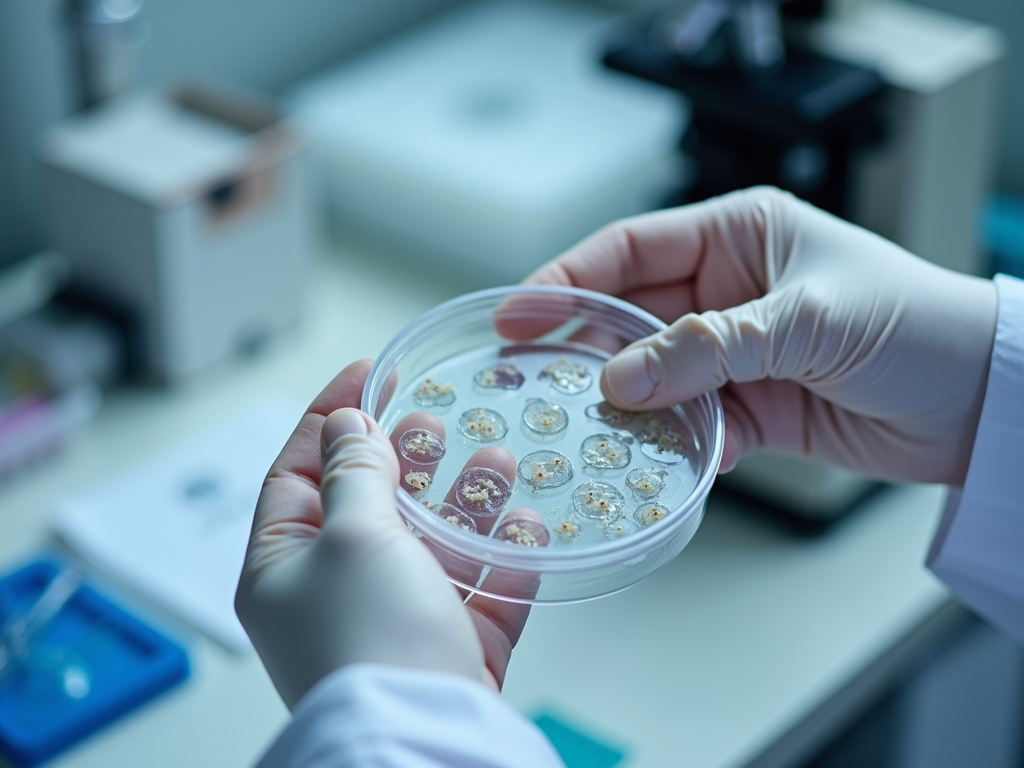Understanding IVF: A Beginner's Guide
March 21, 2025, 10:28 a.m.
IVF, or In Vitro Fertilization, is a fertility treatment that helps people conceive by combining eggs and sperm in a lab. It’s a popular choice for those facing infertility, giving hope to many couples and individuals dreaming of a family.
In Vitro Fertilization, or IVF, is a game-changer in reproductive medicine. It’s a process that brings eggs and sperm together outside the body to create embryos, offering a path to parenthood for those struggling to conceive naturally.
What is IVF?
IVF is a fertility treatment where doctors take eggs from a woman’s ovaries and mix them with sperm in a lab. Once fertilized, the embryos are placed back into the uterus to grow into a baby. It’s a clear, step-by-step approach to overcoming infertility.
Why People Choose IVF
IVF isn’t just for one type of person—it helps many. Here’s why some turn to it:
- Women’s challenges: Blocked tubes, endometriosis, or irregular ovulation.
- Male infertility: Low sperm count or poor sperm movement.
- Unknown reasons: When doctors can’t pinpoint the issue.
- Genetic screening: To avoid passing on certain conditions.
- Saving fertility: Before treatments like chemo that might harm it.
IVF meets people where they are, tailoring solutions to their needs.

The IVF Process: Step by Step
IVF sounds complex, but it’s a series of clear steps. Here’s how it works:
- Ovary Boost:
- You take meds to help your ovaries make more eggs.
-
Doctors check progress with ultrasounds and blood tests.
-
Egg Pickup:
- A quick procedure grabs the eggs from your ovaries.
-
You’re sedated, so it’s not painful.
-
Sperm Gathering:
- Your partner or a donor provides a sperm sample.
-
For male infertility, a single sperm might be injected into an egg.
-
Mixing it Up:
- Eggs and sperm meet in a lab dish to fertilize.
-
Doctors watch for signs it worked.
-
Embryo Growth:
- Fertilized eggs grow into embryos over a few days.
-
The strongest ones are picked.
-
Embryo Drop-off:
- Doctors place embryos in your uterus.
-
It’s simple—no anesthesia needed.
-
Support Phase:
-
Hormones help your body get ready for pregnancy.
-
The Big Test:
- Two weeks later, a blood test shows if you’re pregnant.
Each step builds on the last, guiding you toward your goal.

Success Rates: What to Expect
IVF doesn’t guarantee a baby, but it offers solid chances. Success depends on:
- Age: Under 35? You’ve got a 30-40% shot per cycle. Older? It drops.
- Infertility Cause: Some issues respond better than others.
- Lifestyle: Smoking or extra weight can lower your odds.
- Clinic Skill: Top-notch teams with great tech boost results.
For a 30-year-old, about one in three cycles leads to a baby. Knowing this helps you plan.

Emotional and Money Matters
IVF can feel like a rollercoaster. You might face ups and downs, so try this:
- Find a Group: Talk to others going through it.
- Stay Open: Share with your partner and doctor.
- Be Real: It might take a few tries.
Money-wise, IVF costs a lot—thousands per cycle. Check insurance or payment plans to ease the load. It’s a big investment, but many say it’s worth it.

Preparing for Fertility Treatments
Getting ready for IVF can improve your chances. Here’s how:
- Live Healthy: Keep your weight steady, skip smoking, cut back on drinks.
- Eat Smart: Load up on fruits, veggies, and nuts.
- Chill Out: Try yoga or deep breathing to lower stress.
- Plan Cash: Look into costs and coverage early.
Small changes add up, setting you up for success.

Male Infertility and IVF
Guys play a big role in infertility—about 40% of cases tie back to them. Low sperm numbers or weak swimmers? IVF can help, especially with a trick called ICSI. It injects one sperm right into an egg, skipping the hurdles.
Understanding Infertility
Infertility means no baby after a year of trying. It hits 15% of couples. Causes mix and match—sometimes it’s him, sometimes her, sometimes both. IVF tackles it head-on.
My Take
I’ve seen friends go through IVF. It’s tough but amazing. One couple I know cried happy tears after years of waiting. It’s not just science—it’s heart. You’re not alone; tons of people get it and want to help.
Wrapping Up
IVF is a powerful tool for building families. It’s a detailed process with real hope, even if it’s not easy. From egg retrieval to that final test, every step matters. Success varies, but preparation and support make a difference. Whether it’s male infertility or other hurdles, IVF opens doors.
Summary
IVF helps people have babies by mixing eggs and sperm in a lab. It’s a go-to for infertility, with steps like egg pickup and embryo transfer. Success depends on age and health, and it’s a big emotional and financial lift. Preparing for fertility treatments with diet and calm vibes helps, especially for male infertility challenges.